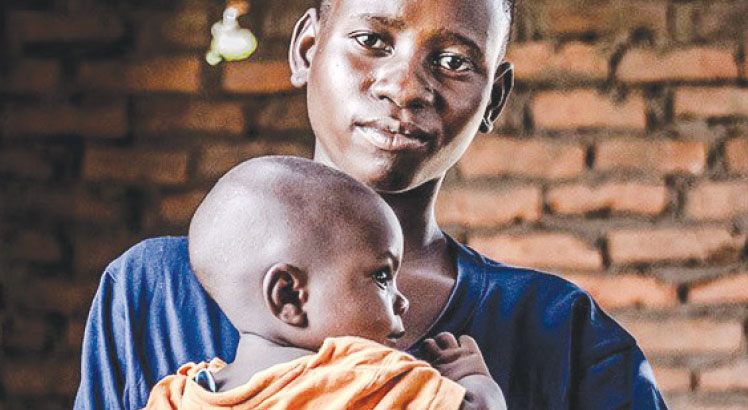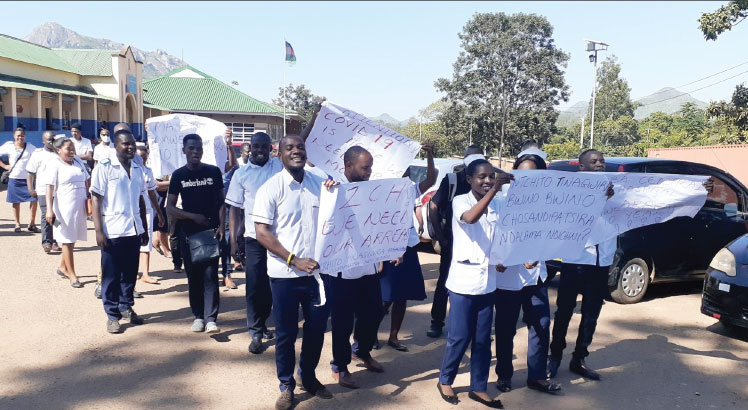Teen pregnancy and development
Early this year, I met a 12-year-old girl who had just given birth at Mangochi District maternity hospital. I asked if she wanted to go back to school.
She was resolute to get married to her 20-year-old boyfriend. Her mother and guardian also supported the idea. She said, she was happy to be a grandmother.
The story of this young mother resonates with many happening across Malawi.
Every year, we celebrate the International Youth Day on August 12. There is need for serious reflection on whether the country is winning the war to end early unplanned pregnancies.
In Malawi, early pregnancy remains high at 29 percent. Sadly, 30 percent of all maternal deaths occur in adolescents. If the girls survive child-bearing, they face a myriad of health challenges, including fistula.
According to the Demographic and Health Survey of 2015, , almost half of the girls in the country are already in marriage by the age of 18 and 29 percent aged 15-19 have begun child bearing.

Despite efforts by the United Nations Population Fund (UNFPA) and other development partners to address this problem, cases of teen pregnancy are not coming down. Harmful traditional practices lead the pack.
New nemesis
But Covid-19 has exacerbating the already dire situation. Due to fear of contracting the disease at overcrowded health facilities, and also Covid-19 regulations, most of the youth cannot access quality sexual and reproductive health and rights (SRHR) services, especially prevention of early pregnancies.
Last year alone, Malawi reported to have recorded over 40 000 teenage pregnancies when the closure of schools led to prolonged stay at home, making the youth idle.
The statistics are scary in themselves, but more alarming is the fact unplanned pregnancies are robbing Malawi of future human resource.
Challenges in changing SRHR behaviour will take longer because economic growth and urbanisation are not taking place fast enough. To accelerate a family planning culture, it requires overall environment changes.
But when the girls and their parents are struggling, with their living conditions remaining unchanged significantly (such as access to electricity, clean water, schools, internet, health service, employment for decent income), it becomes equally difficult to motivate them to complete education by avoiding teen-pregnancy and child marriage.
Population issue
One unplanned pregnancy is enough to deny the potential of a young girl’s aspirations, reinforce poverty cycles in her life and reduce access to opportunities and put them at risk to many maternal and newborn diseases.
Currently, one third of the babies born annually—about half a million—come from teenage mothers. By the age of 35, an average teen mother will have four to six children.
The children born from the teen mothers are likely to be raised in destitution, reducing their opportunity for being educated, being healthy and getting jobs with decent income.
Considering the population structure and the specific cohort created by this massive teen pregnancy, it’s actually a major driver of intergenerational poverty transmission in Malawi.
Ultimately, this means teenage pregnancy becomes more than just a girls’ issue as they are also giving birth to boys.
The likelihood of these boys born from teenage mothers attaining a better education is next to impossible. In most cases, such children drop out of school by the age of 10.
Malawi cannot afford to continue having this kind of unplanned pregnancies leading the very large part of the population becoming extremely poor.
In November 2019, Malawi made 10 commitments at the International Conference of Population and Development (ICPD) in Nairobi, Kenya.
One of the commitments was to end child marriages by 2030. With just nine years to go, this is a huge task since the country is ranked 12th in the world on child marriages.
Despite this unenvious task, solutions are plenty. One solution is already part of the commitments’ Malawi made during the ICPD: Malawi committed to make sure that ‘100 percent of the service points delivering sexual and reproductive health and rights services are youth-friendly.’
Access to age appropriate SRHR information and services has a bearing on the life of an adolescent girl especially her stay in school.
Most girls that are not properly informed on SRHR might end up getting pregnant while at school which leads to early marriage.
This is why it is important to empower adolescent girls and boys not only with age appropriate information, but also making sexual reproductive health services available through comprehensive sexuality education.
Laws and policies abound in Malawi to tackle teenage pregnancy but enforcement remains limited. The Marriage, Divorce and Family Relations Act is the perfect tool to deal with this challenge, if implemented to the letter.
Make laws work
The law is clear on child marriages. It’s illegal for someone to impregnate or marry a girl below the age of 18. But so many girls are being married off even today.
Finally, it should be everyone’s responsibility to ensure that young people, especially girls have unhindered access to quality SRHR services.
The scale of teen-pregnancy and its consequence are seriously threatening achievement of the development visions of Malawi. If we do not address the problem now, efforts being poured into empowerment of young people may not yield desired outcomes.
Therefore, it requires urgency, further engagement of all levels of society by stakeholders to promote a culture of “responsible parenting” by actively practicing family planning to set a strong foundation for human capital development and the achievement of the Malawi Vision 2063.





